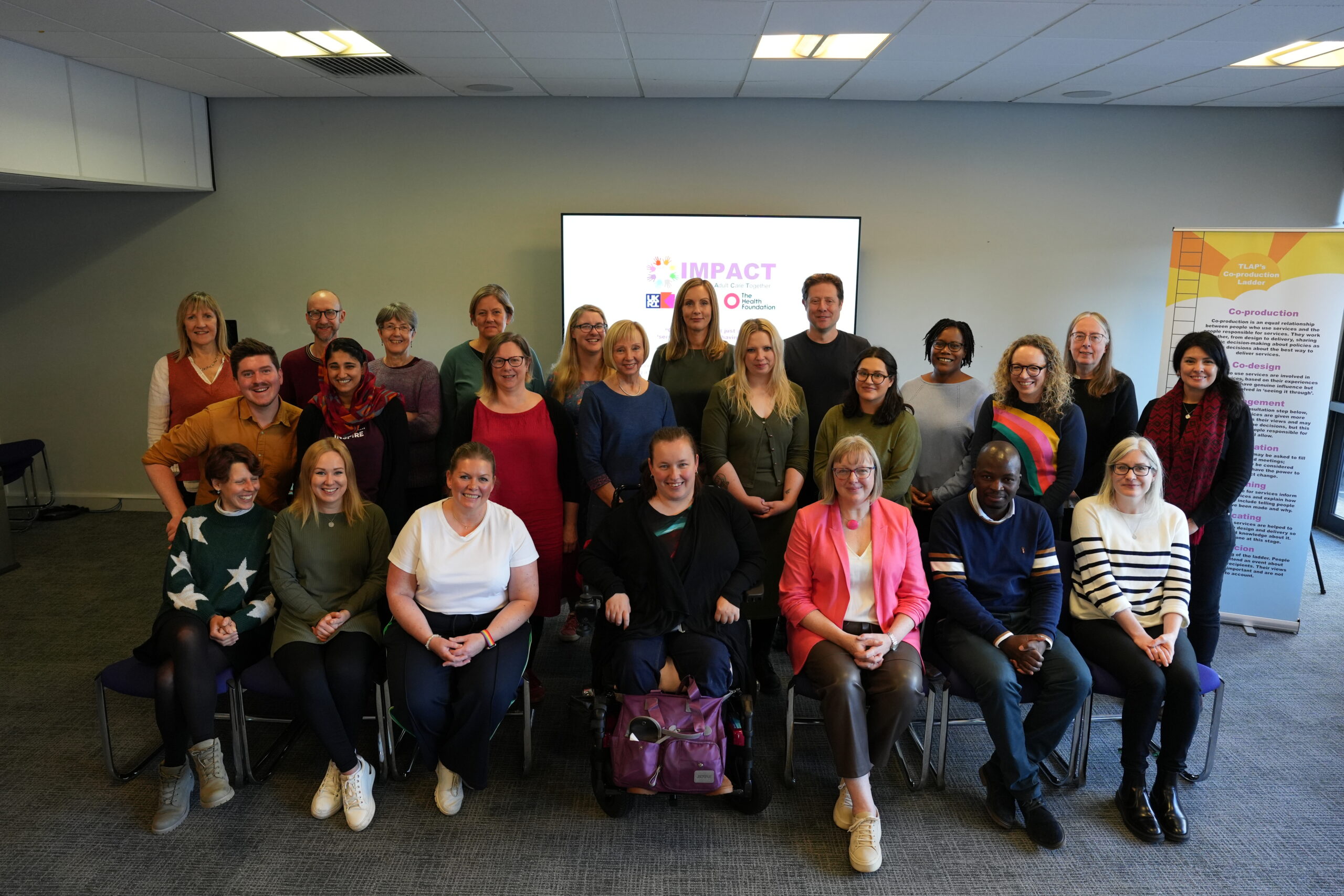
After a great evening, settling into Stirling Court Hotel at the University of Stirling, the team gathered in a conference room to explore how to improve co-production.
The IMPACT Core, Delivery and Leadership teams were joined by members of the Co-production Advisory Group (CpAG). The sessions are led by Karen McCormick, our Lived Experience Engagement Lead, and Natalie and Ann Marie from the Co-production Advisory Group.
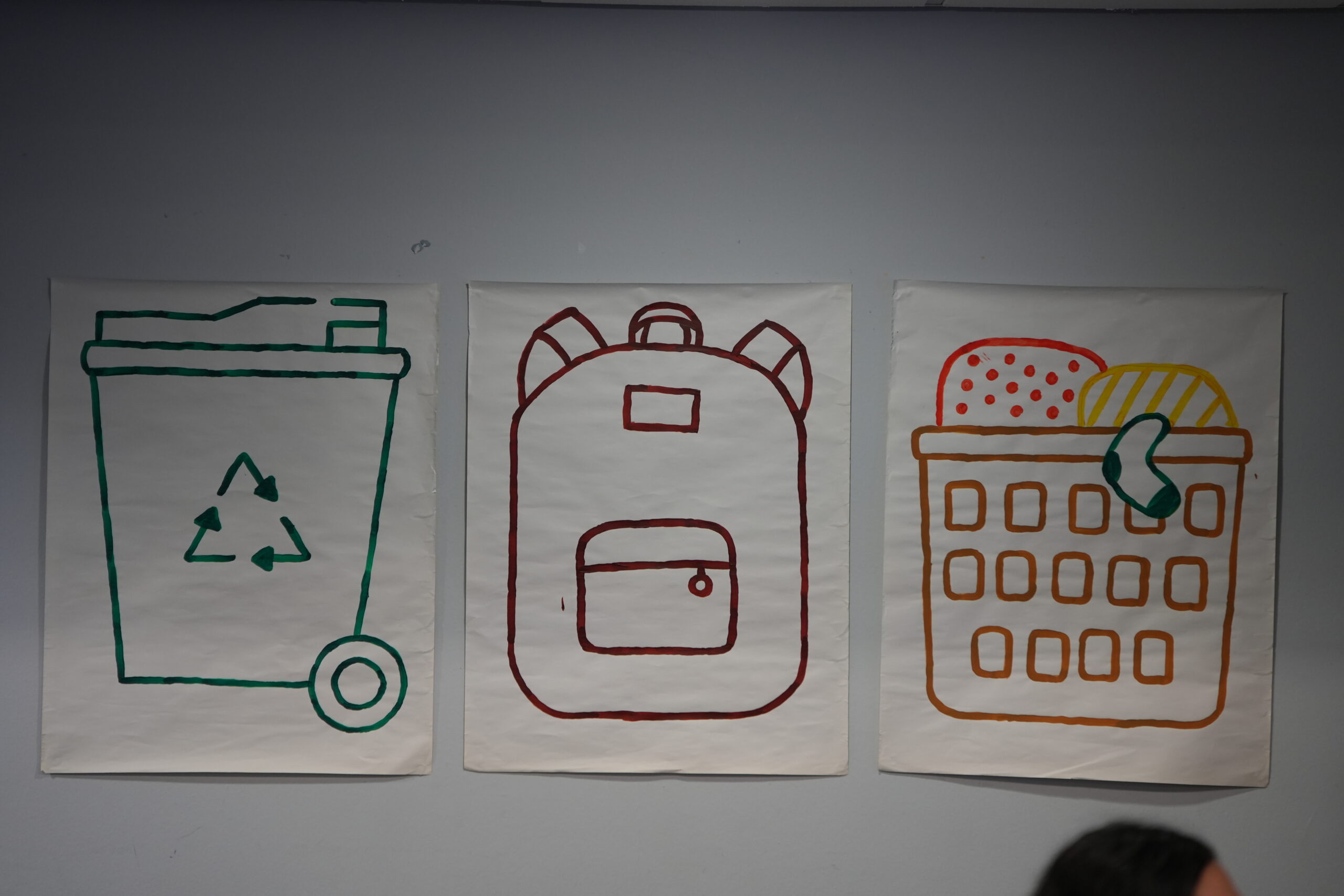
“We are exploring the values, practices and principles of co-production”, introduced Karen McCormick. “This will be a very interactive day, so we will all be getting up and engaging in different activities.”
For our take aways we had three sheets showing a “backpack, for things you want in your armour going forward. Recycling is the rubbish that doesn’t work and we want to lose. And the laundry basket represents the things we could use again if we clean them up”
Part 1: Culture
Icebreaker
Natalie began the icebreaker. Natalie moved out of her family home five years ago. Her electric chair, along with the 24-hour support she receives, gives her freedom. She is hoping to begin studying technology, science and mathematics through the Open University. She works three part-time jobs, and the income from them supports her living expenses including paying for her electric chair in installments.
She began, “My name is Natalie, and I am from Perth and joined the CpAG at the beginning of the year. We are going to start today as we start all our meetings. Today’s icebreaker is exploring qualities that we bring from our personal or professional experience that we want to keep in our backpack going forward.”
Everyone in the room picked a personal or professional quality that helped them improve co-production. Each person shared and discussed these qualities with those on their table.
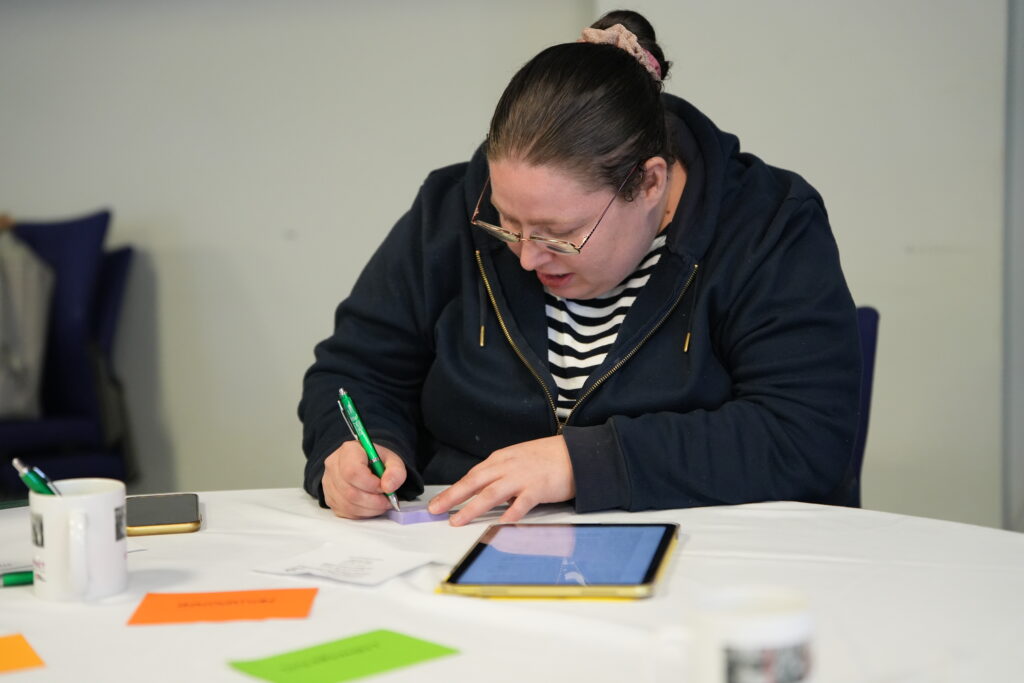
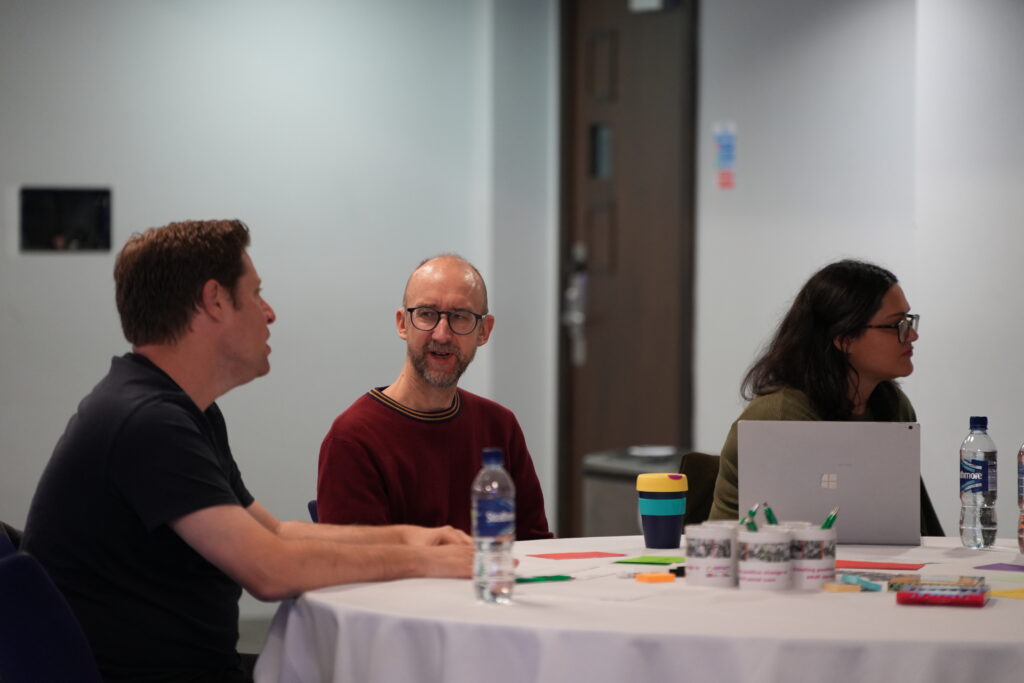
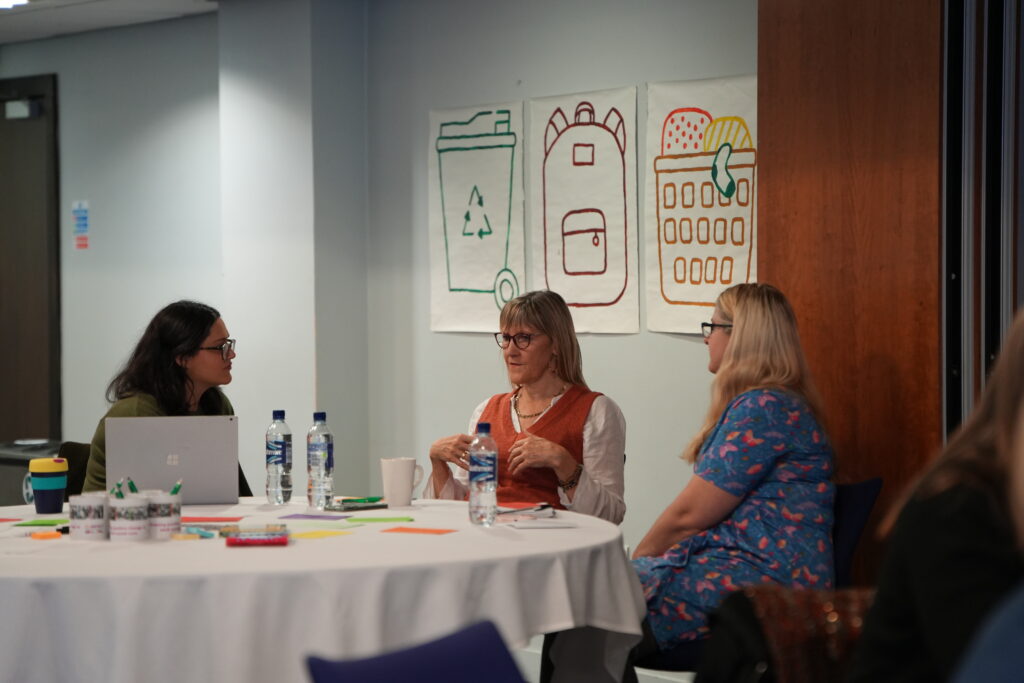
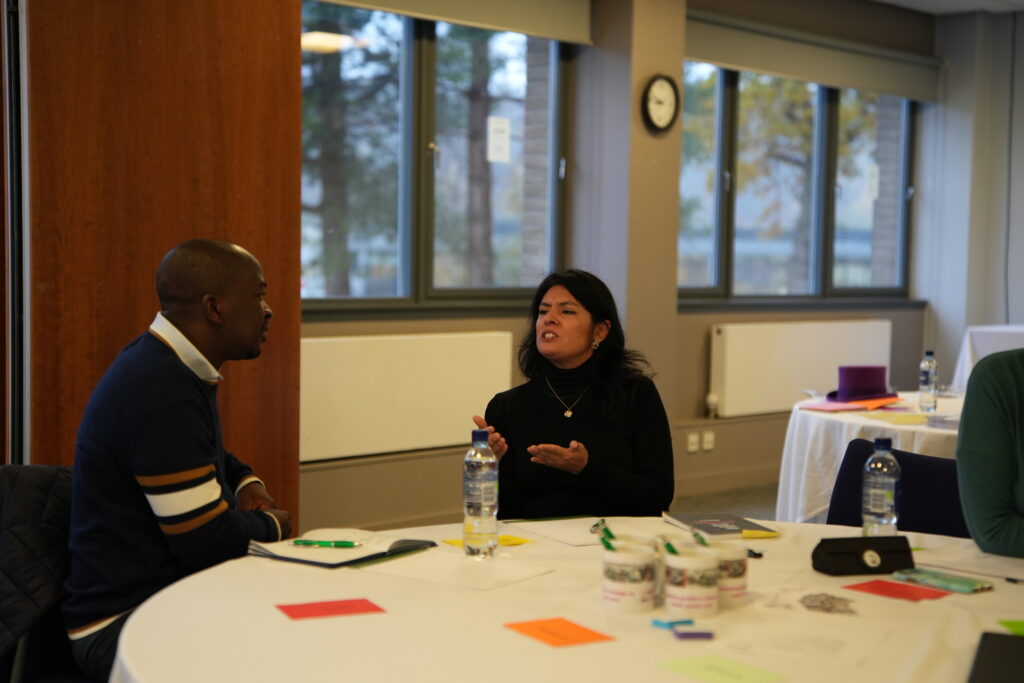
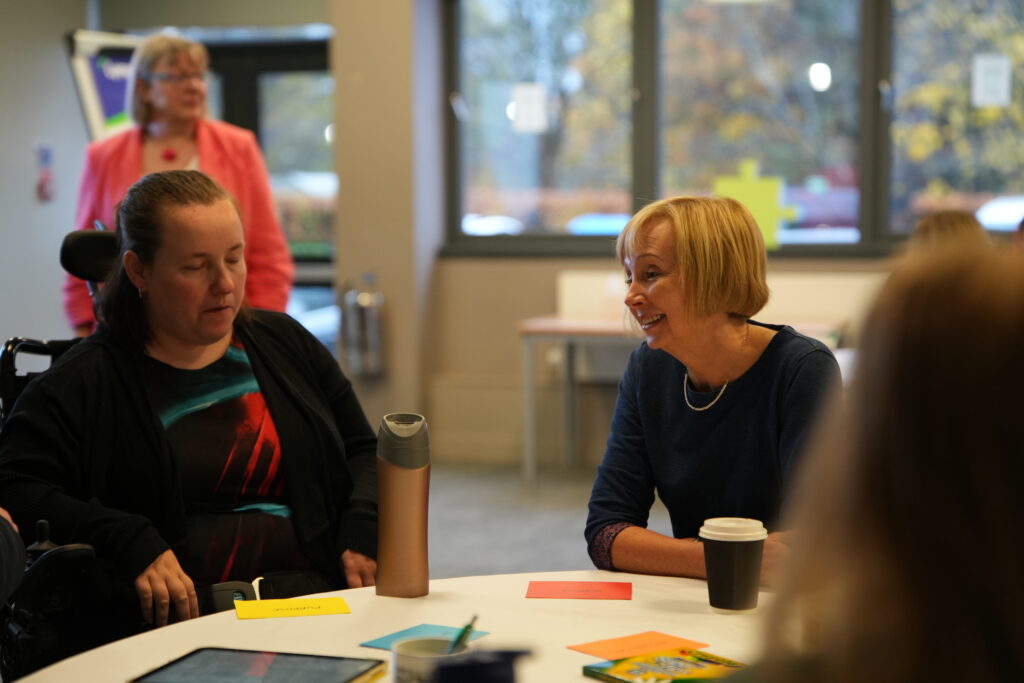
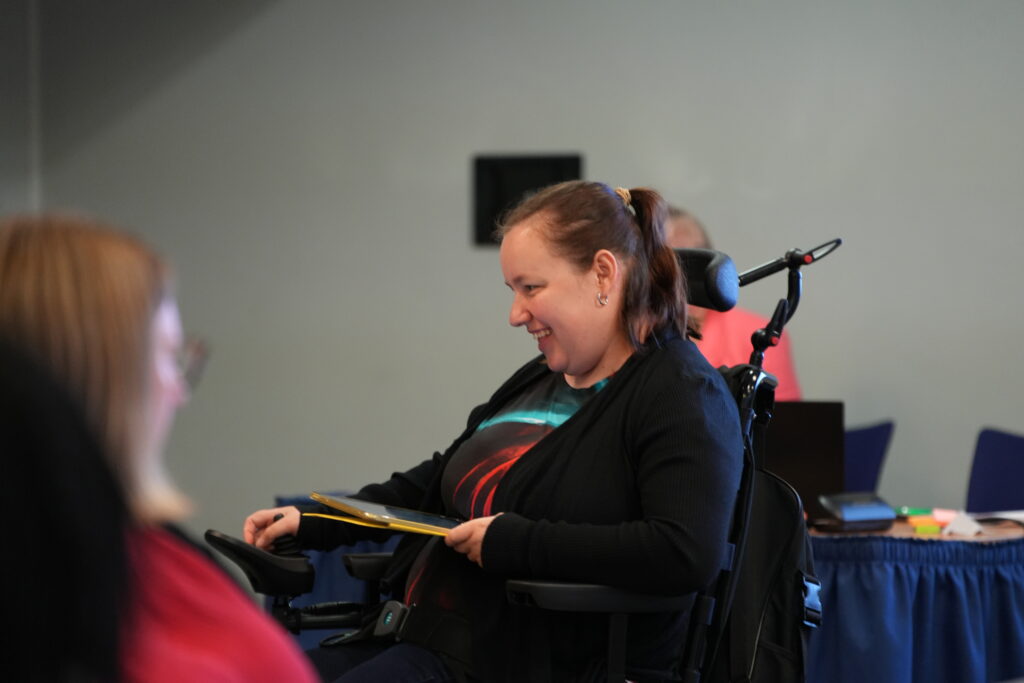
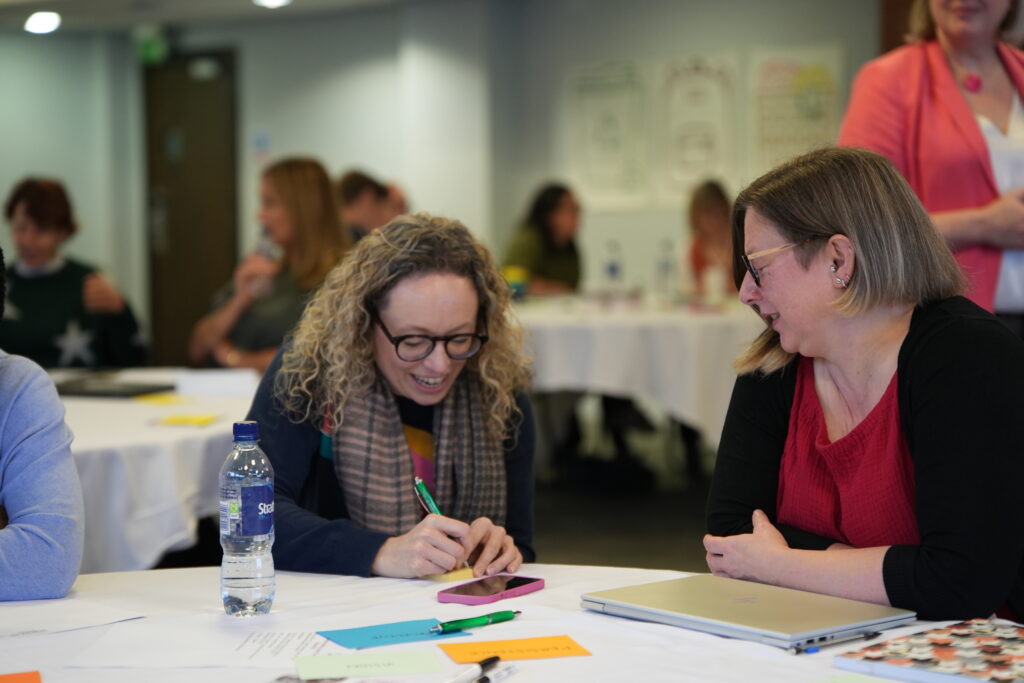
Lorraine picked: “Transformation – I picked this because I love to feel that there is always a possibility to change and transform – we don’t have to feel stuck in boxes and think we can’t do something.“
Kathryn added: “Commitment – I have been in and around social work since 1982 – I can see what is and isn’t good, but I am committed to the cause. I have a value base about people deserving the best possible life.”
Lousie had: “Simplicity – our lives are more complex than people see. People make a fuss about things but it’s all about the simple things like connecting with other human beings. Lose the noise and find what matters.”
Laur said: “Communication – we all need each other and speaking across disciplines is really helpful.”
Outcomes for the day
In small groups the team discussed the outcomes they hoped to get out of the day and wrote them on post-it notes with names.
Ann Marie then shared the aims for the day, which reflected the outcomes the team had written. All of which, when implemented will improve co-production work within IMPACT going forward.
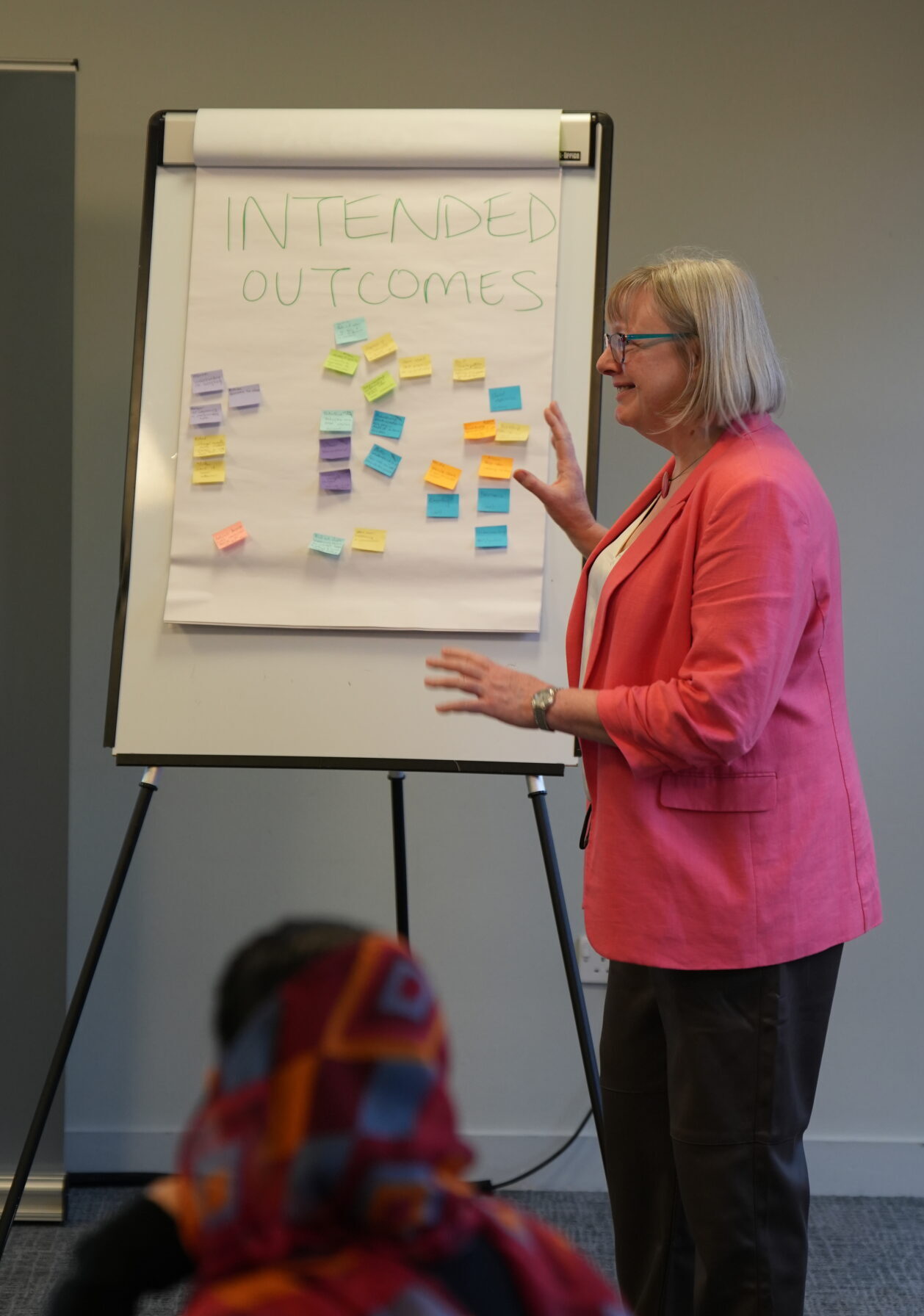
North Star
Clenton sent a video discussing IMPACT’s ‘North Star’ and best practice for co-production.
Clenton shared, “’It is not just about services, it is about having a life.’ This is our mission statement. We all have the means and the opportunity to live in a place we call home with the people and the things we love. Communities where we look out for each other, doing the things that matter to us. It’s not just about having a service, it’s about having a life.
“It’s a long-term relationship, not a one-night stand. There might be good intentions and gestures, but we need to embed trust, dignity, respect, and other elements – we need to understand what they actually mean. Co-production is about human beings. There are three principles that we often overlook: 1 – as human beings we are naturally different and diverse; 2 – as human beings we are curious; 3 – the mind is inherently creative. How do we use these three principles in coproduction? There are many good intentions, but how do we make real change?”
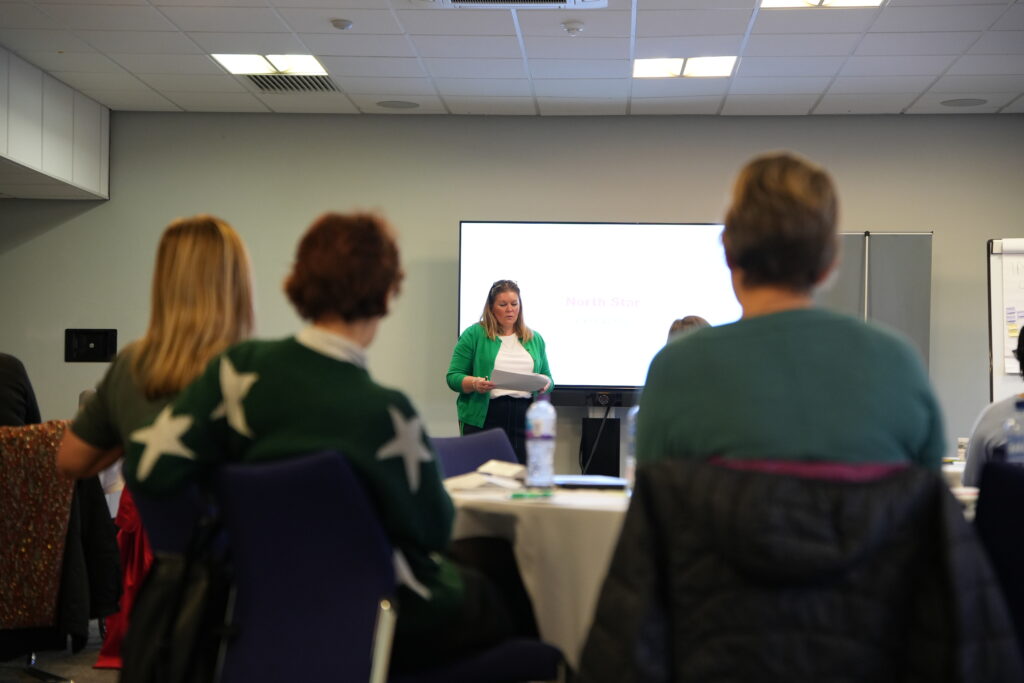
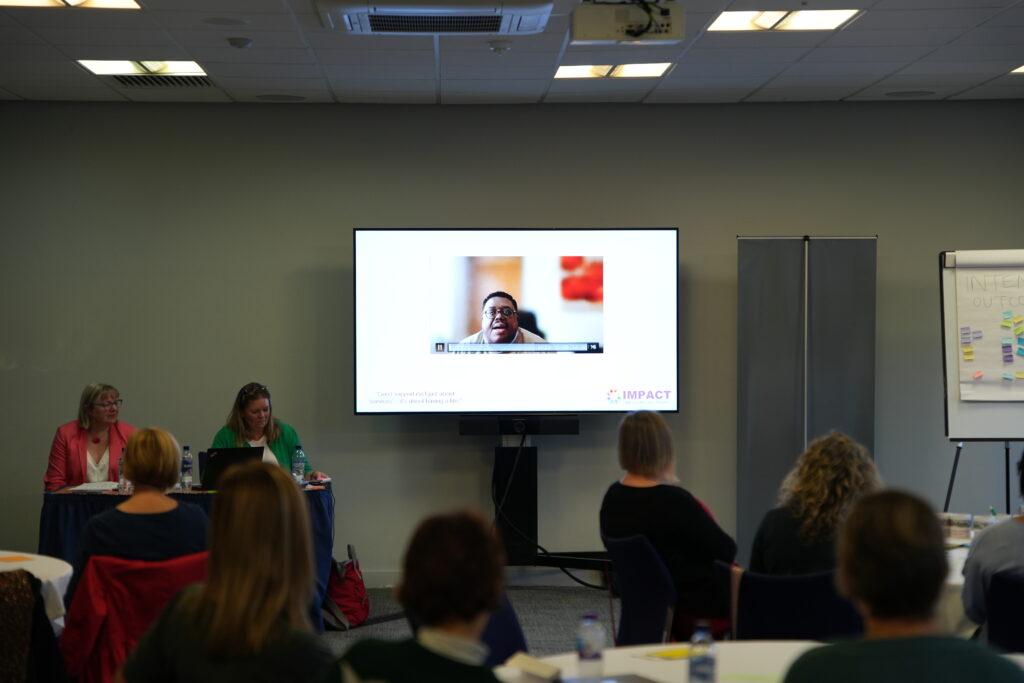
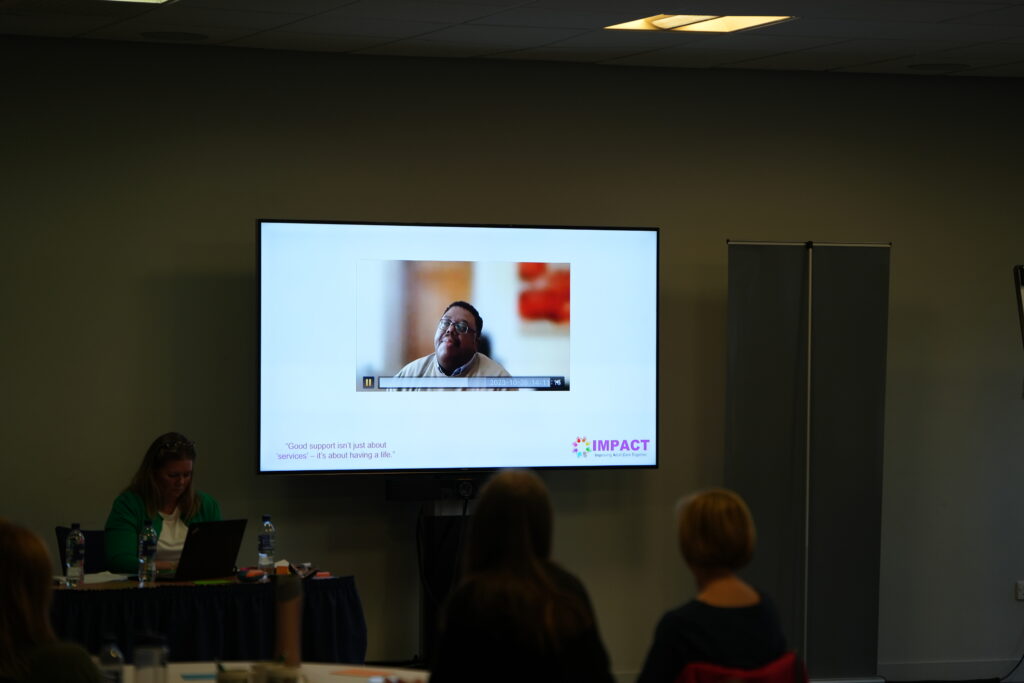
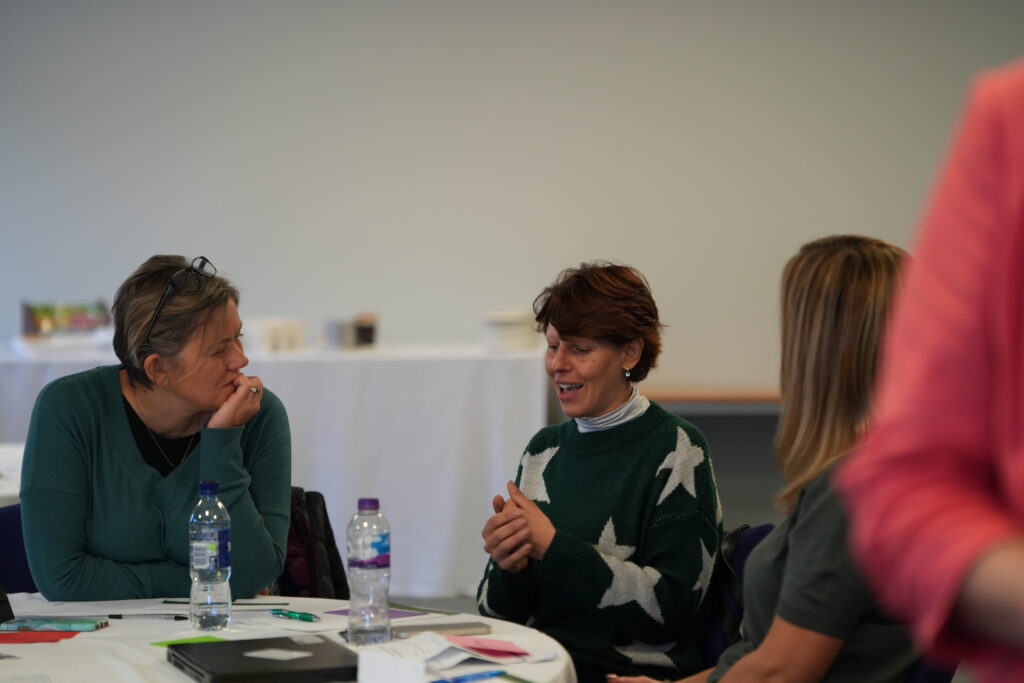
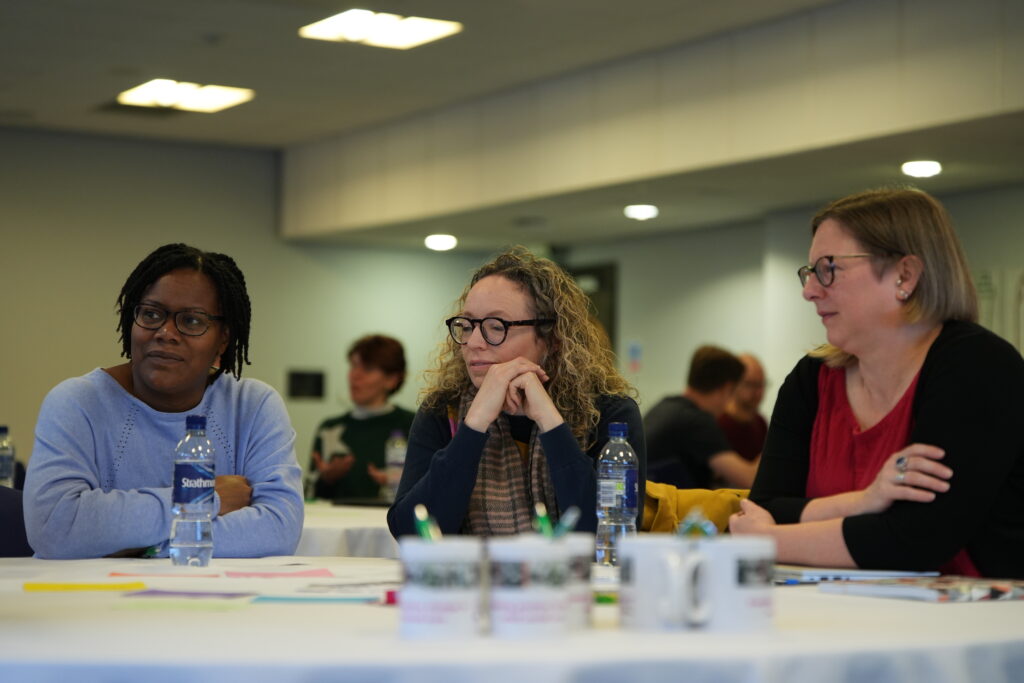
Importance of co-production
Natalie and Naomi highlighted why we need to improve co-production by discussing why co-production was important to them.
“I felt in other situations that they see my disability rather than me and I’m surprised over the years when they realise that I’m more than my disability. Co-production has helped me build my confidence” shared Natalie.
Everyone was asked to discuss why they felt it was important. Groups wrote poems, created artwork, and engaged in physical performances to share their thoughts.
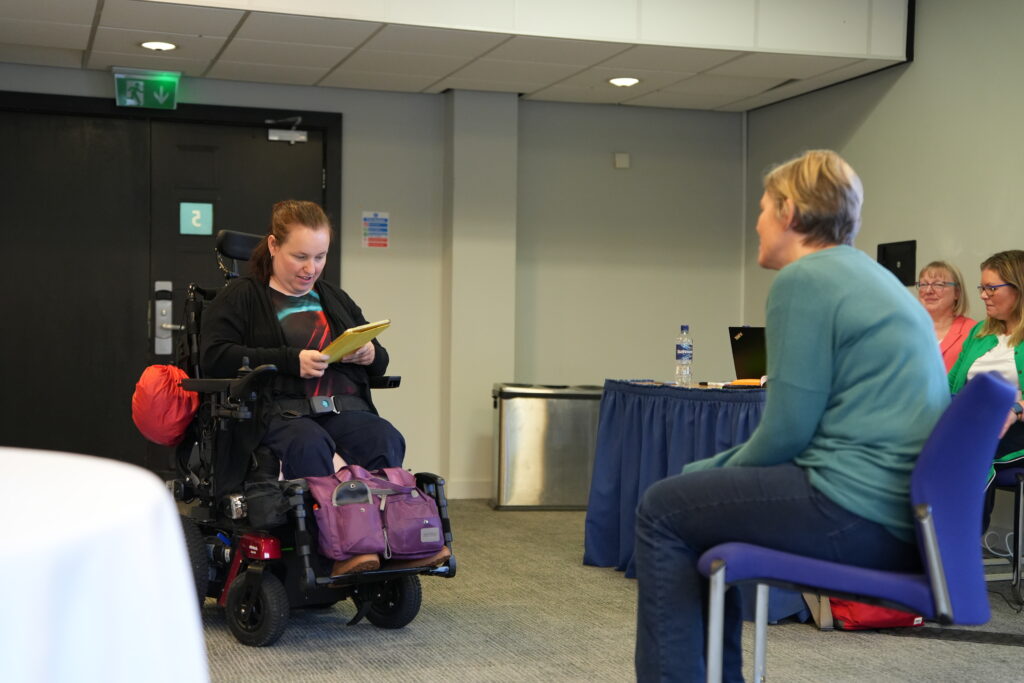
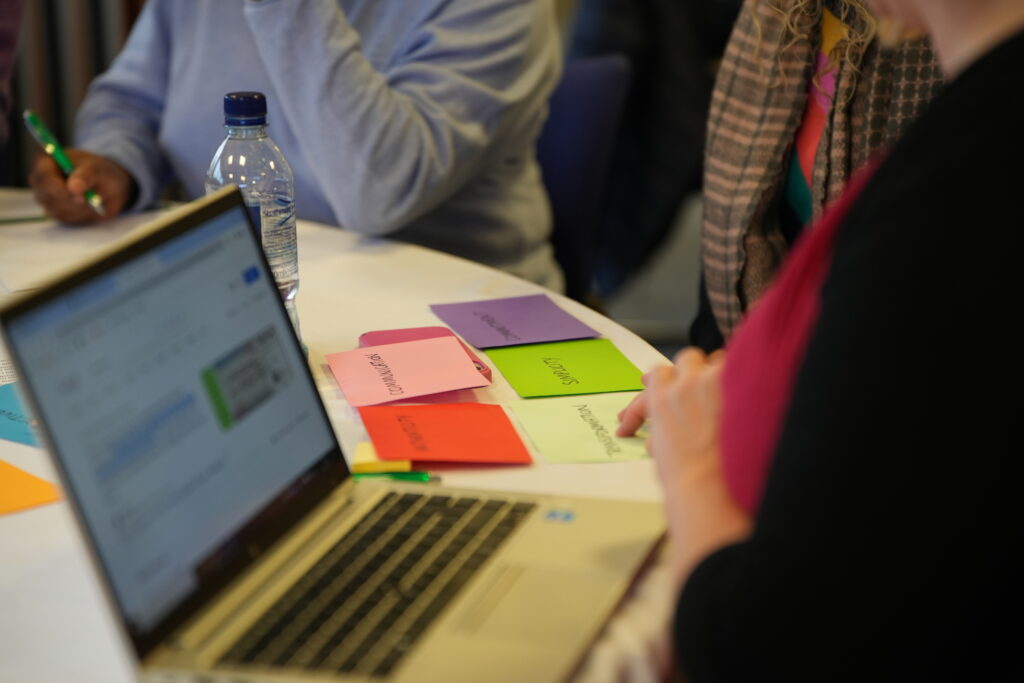
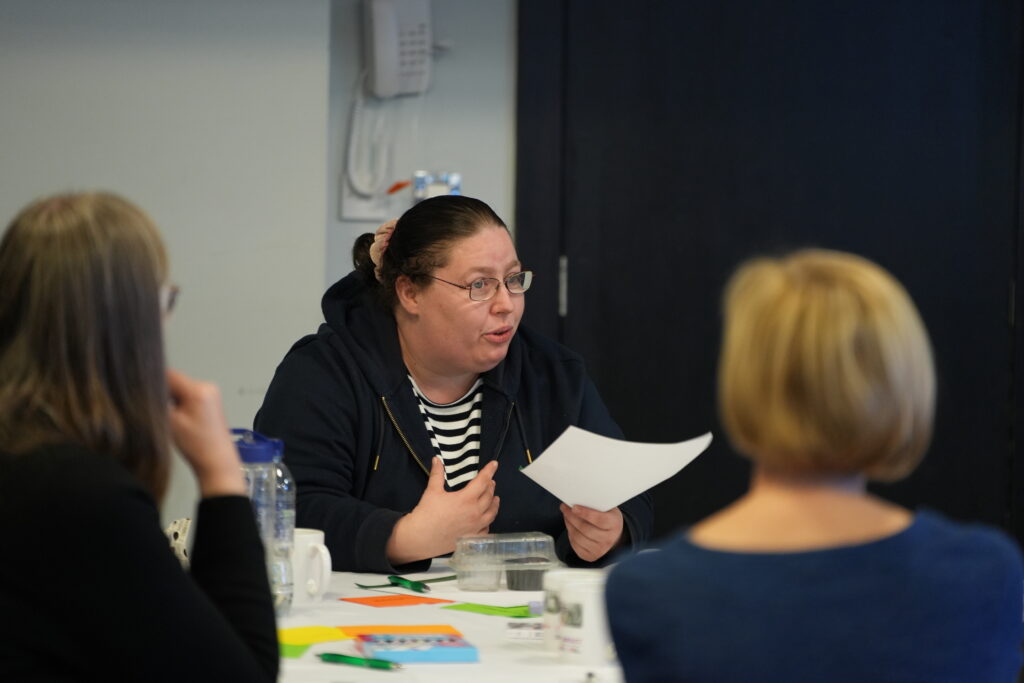
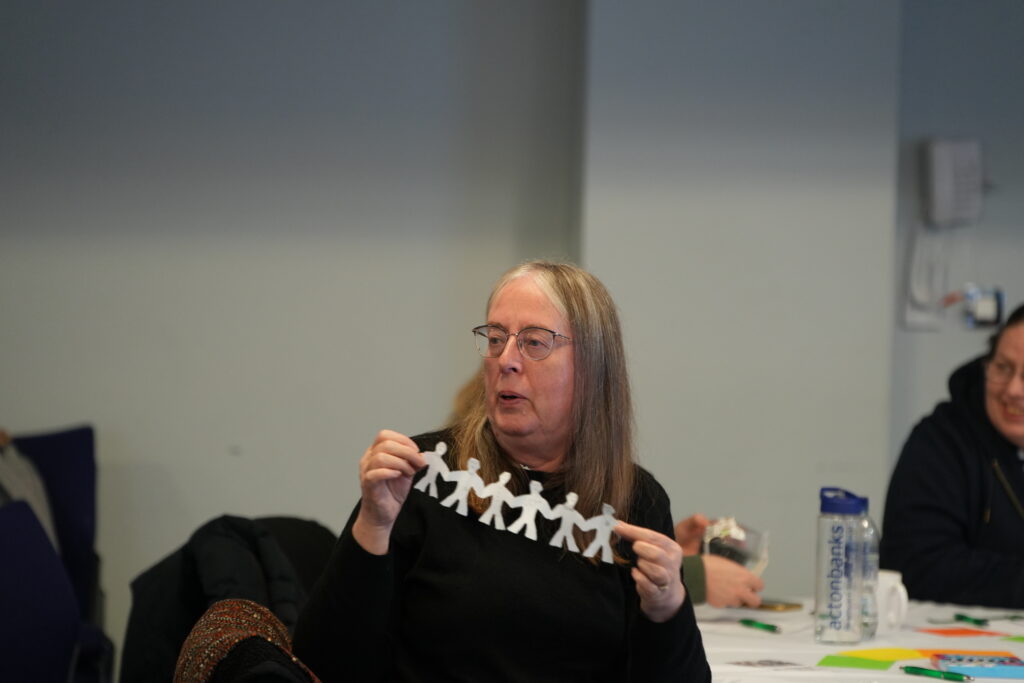
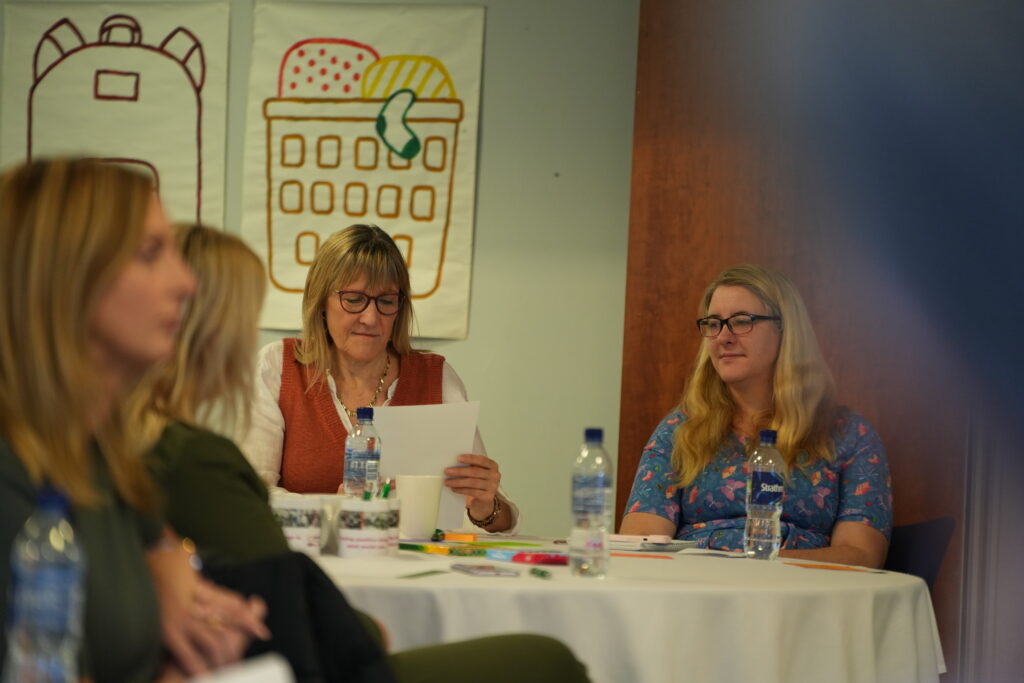
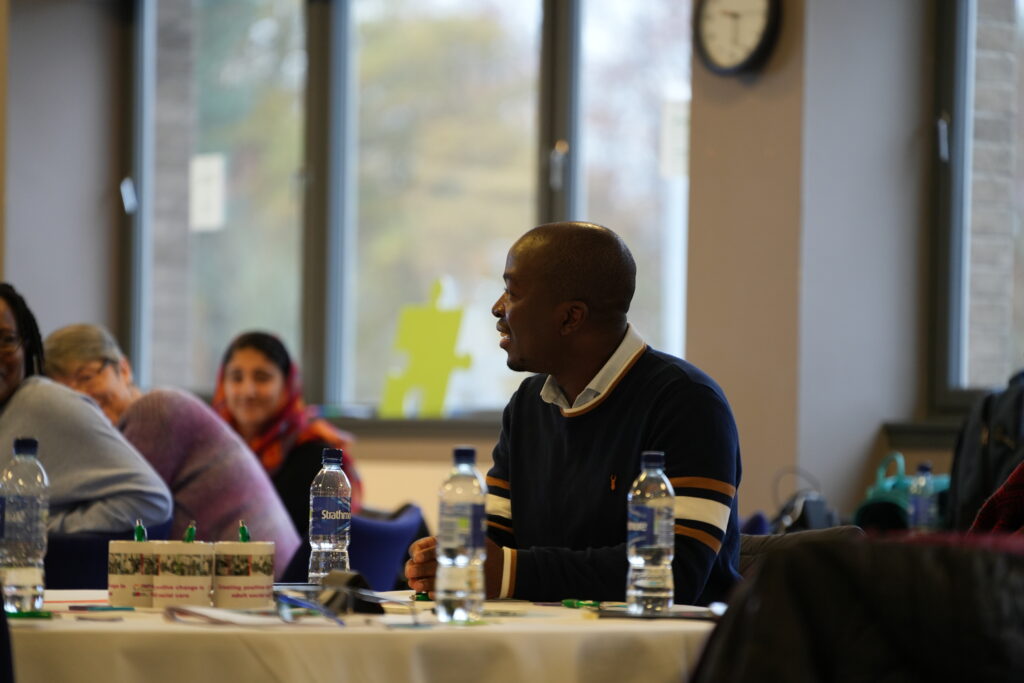

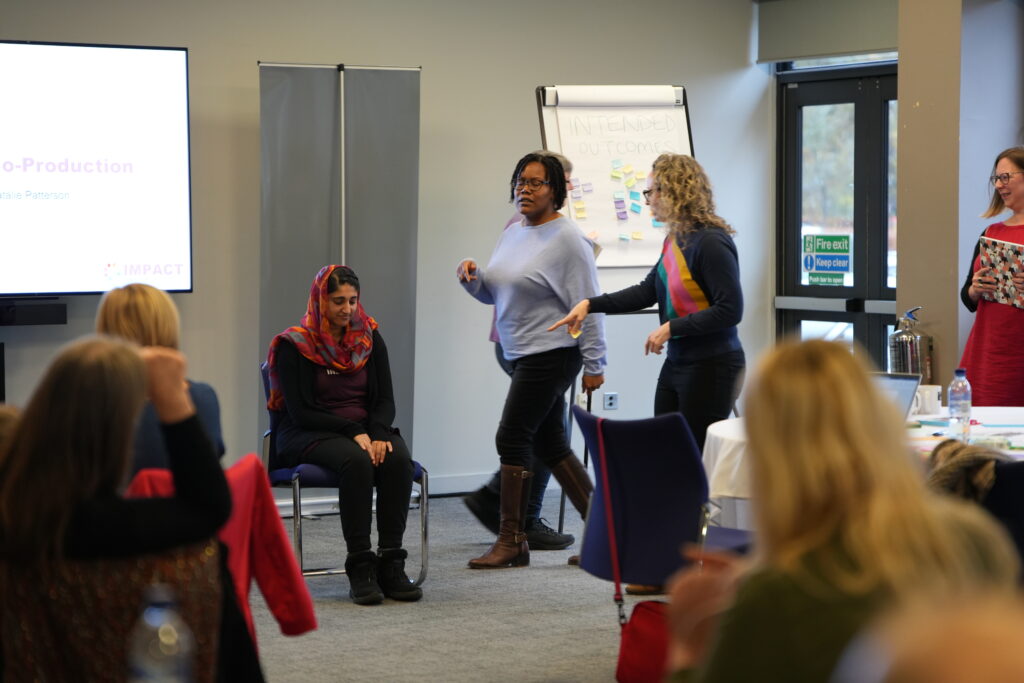
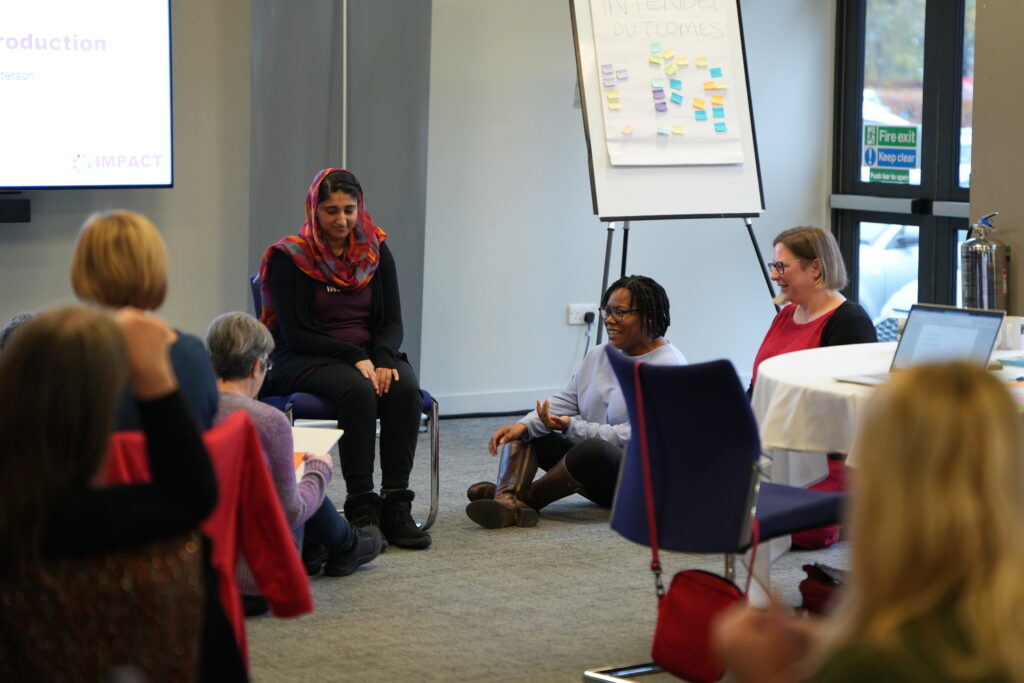
Table 1
“Big shift.
Lucked out, timed out, same old options.
Power, no glory, no power.
Big shift.
I had the power, no glory.
Harnessing hope
Big shift
Struggling to move
No soft topic
Human rights
Big shift
Power and glory. Board member and partner.
Sharing curiosity, creativity and diversity.
Co-production.”
Table 2
“A day in the life of me
I stand here with every one
A look and insight for all
Seeing the skills and abilities of all
Bring the different parts of the
Jigsaw and coming together
As a group
A look and insight for all
How culture and other thing
Affect all in different ways.
A look and insight for all”
Table 3
Discussed how physical expression in cultures has different meanings. Obert shared how in his culture they use clapping to express gratitude, and Marie shared how gestures emphasise different meanings. Their overall message was about the diversity of cultures, and if we bring them to one table we will all understand each other and improve coproduction.
Table 4
Performed a short piece of drama showcasing the engagement of professionals with those receiving care and support. It ended with the group sitting in a circle on the floor, reciting a haiku:
“Trust me to put you
In the center of the room
It is not about me.”
Principles of co-production
The group was presented with IMPACT’s principles for Co-production: Reciprocity, Equality, Diversity, and Accessibility.
Each table was given one of these and asked to create a poster showcasing the principle in practice. Many commented on how our implementation of these principles would improve co-production.

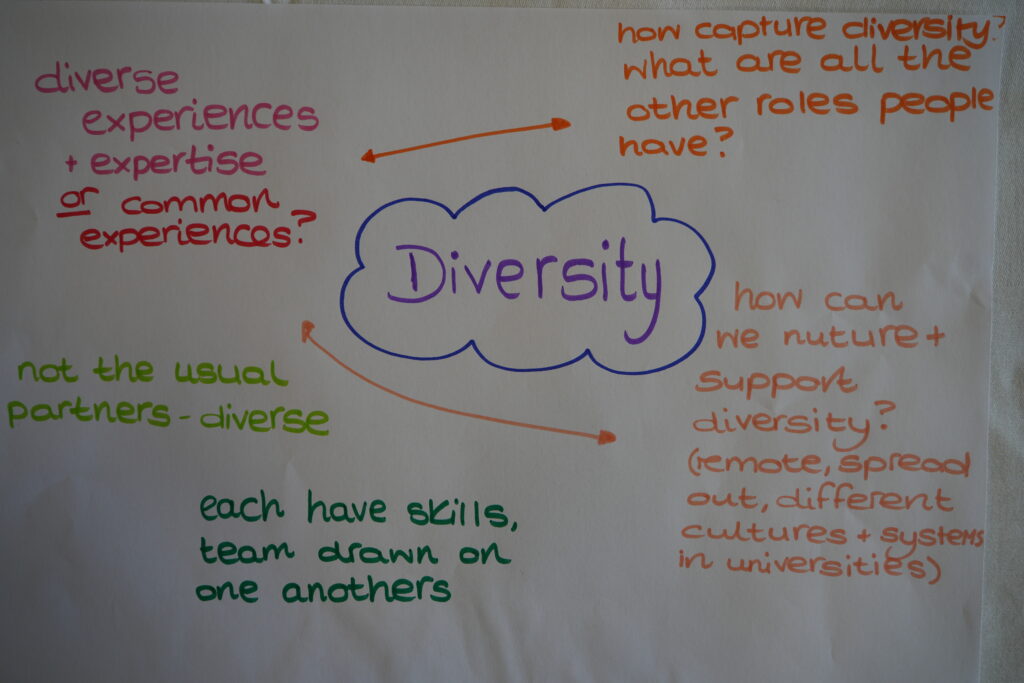

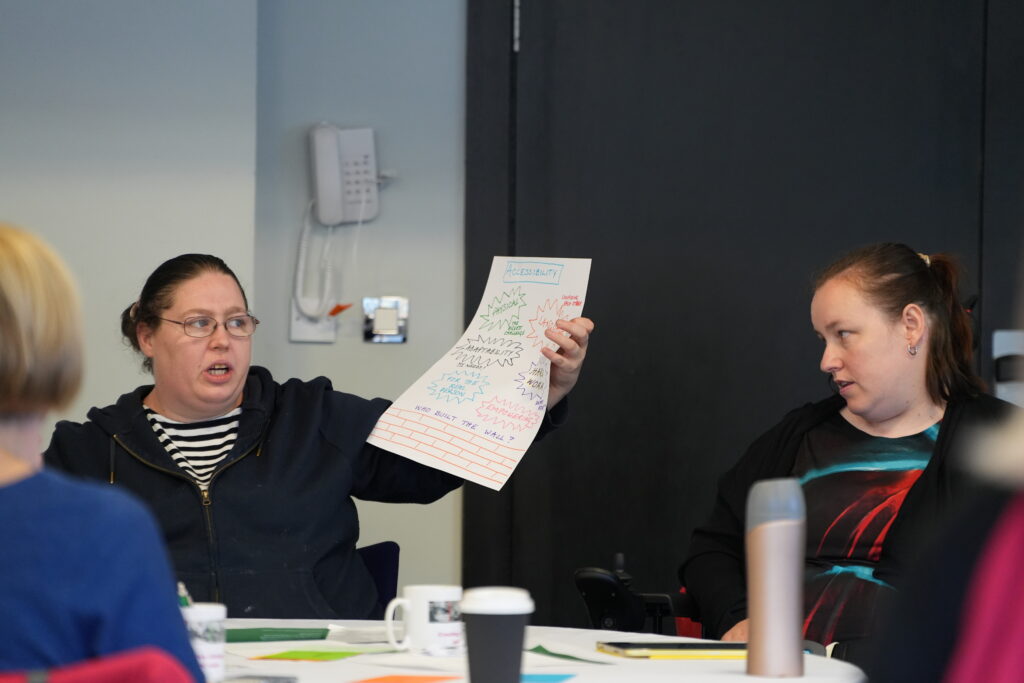
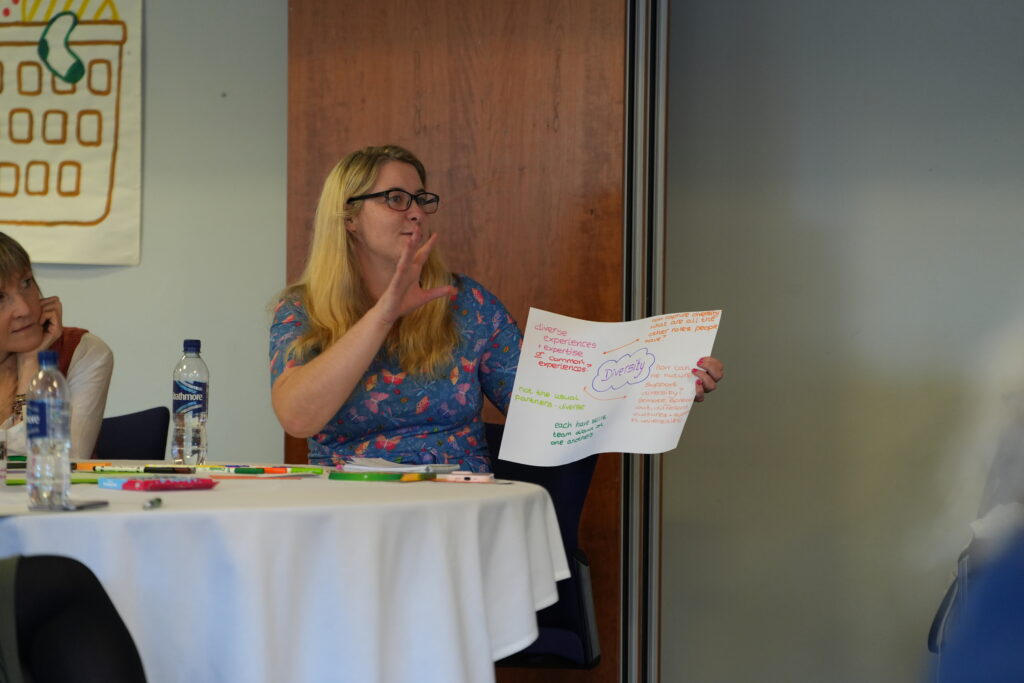

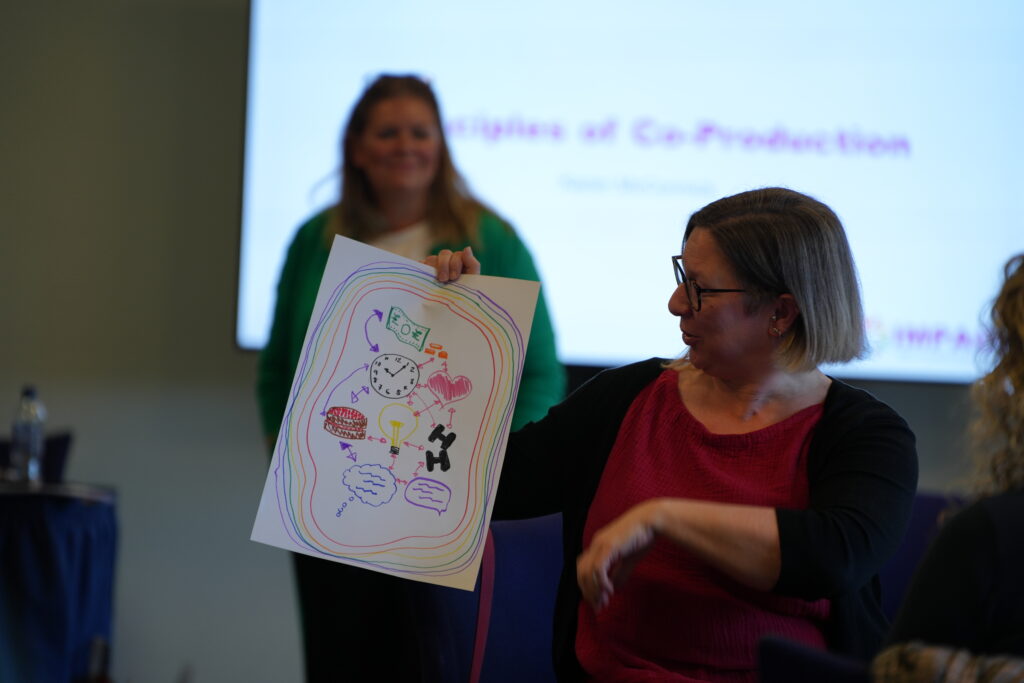
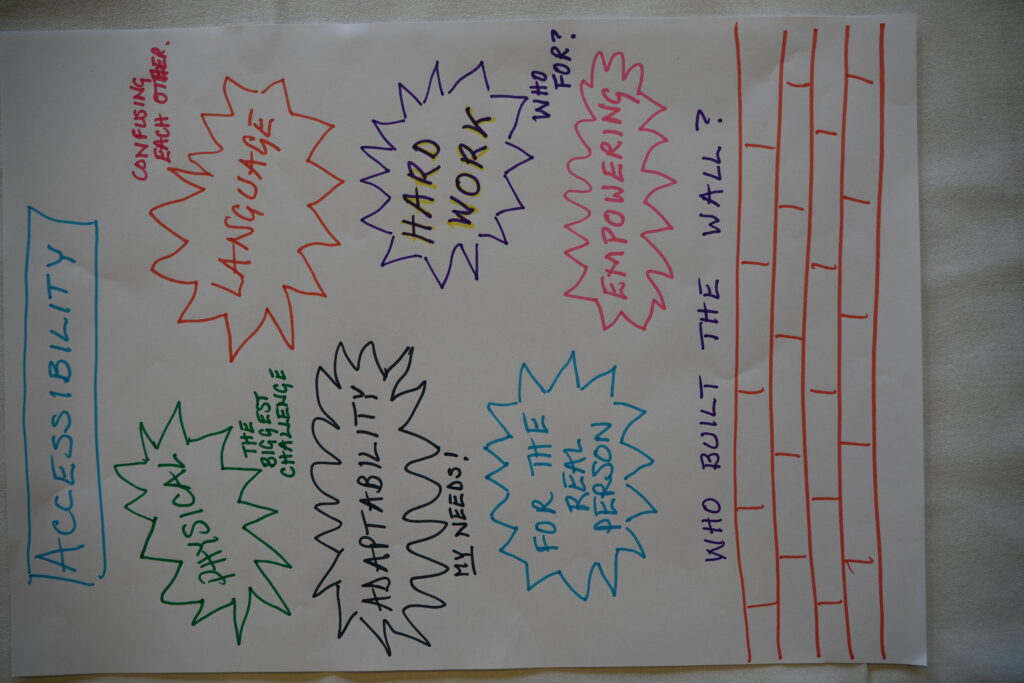
Part 2: Structure
Whose job is it anyway?
Sophie Sinclair, our Head of Operations shared the story, “Whose job is it anyway?”
This is a story about four people named Everybody, Somebody, Anybody and Nobody. There was an important job to be done and Everybody was sure that Somebody would do it. Anybody could have done it, but Nobody did it. Somebody got angry about that, because it was Everybody’s job. Everybody thought Anybody could do it, but Nobody realised that Everybody wouldn’t do it. It ended up that Everybody blamed Somebody when Nobody did what Anybody could have.
Enabling Co-production
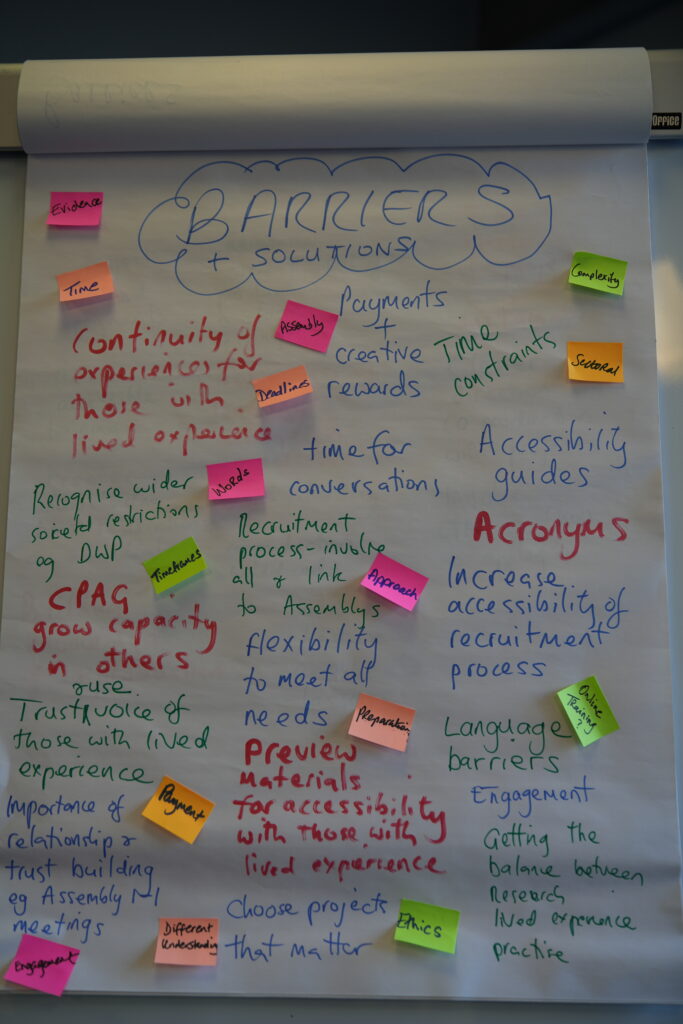
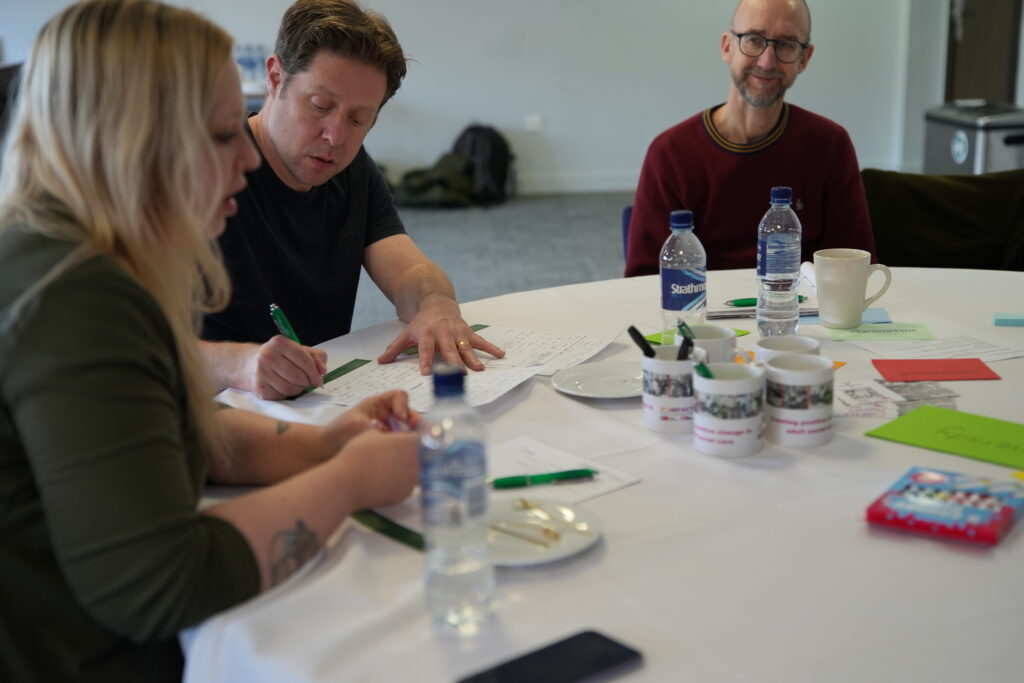

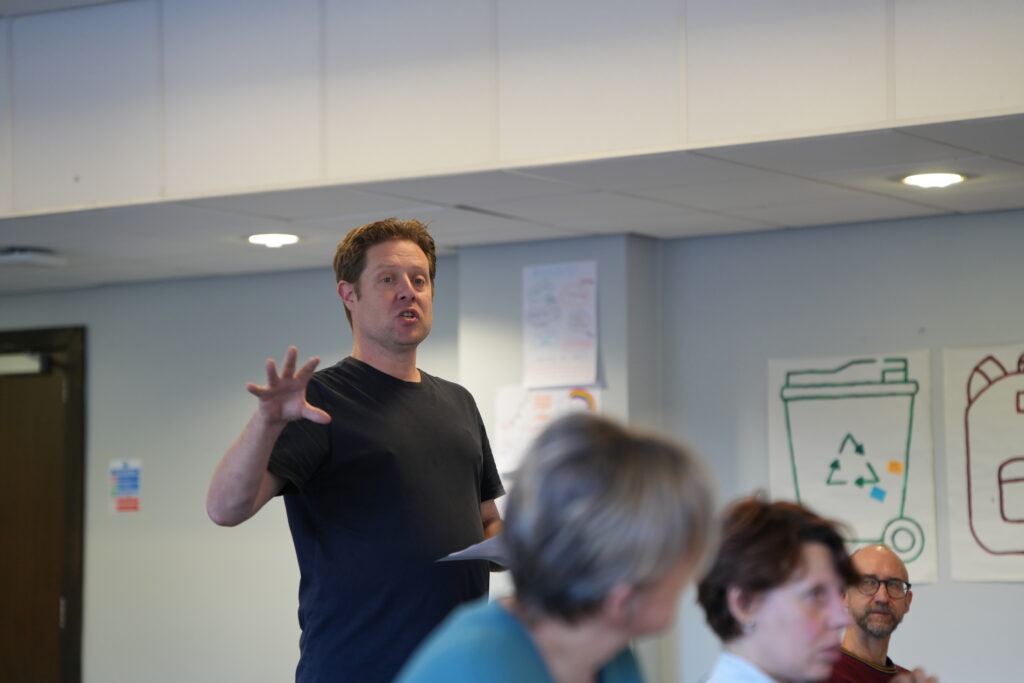
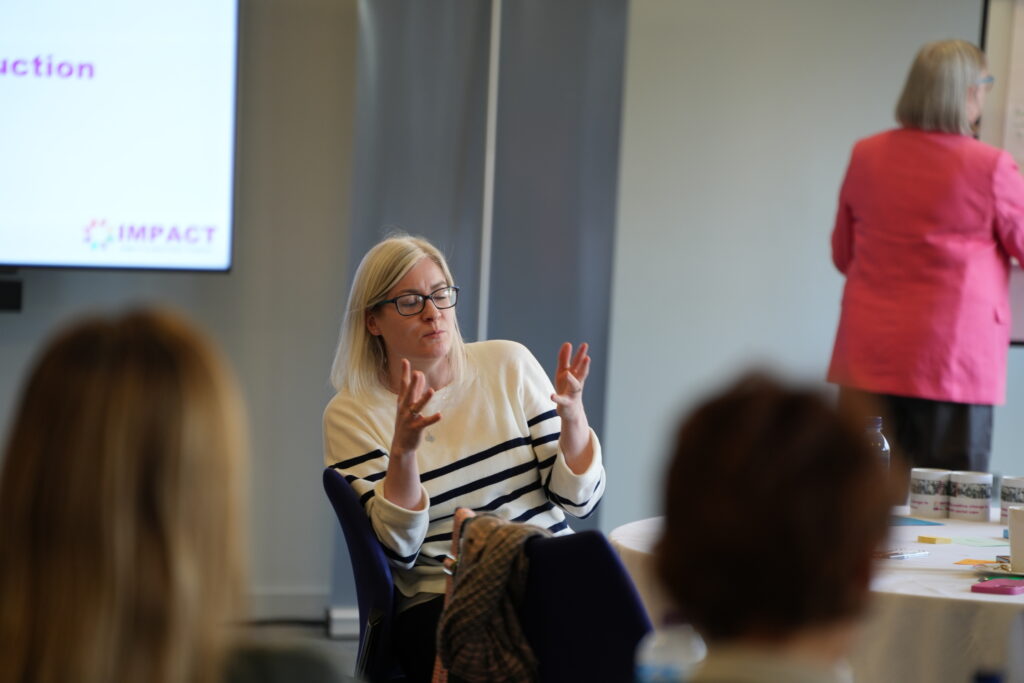
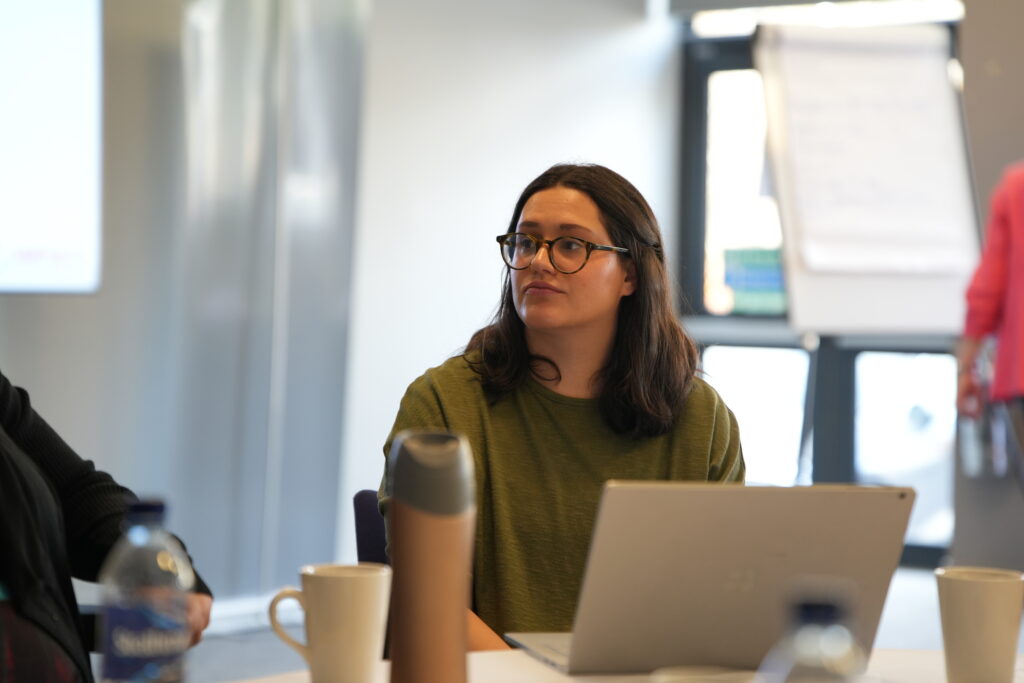
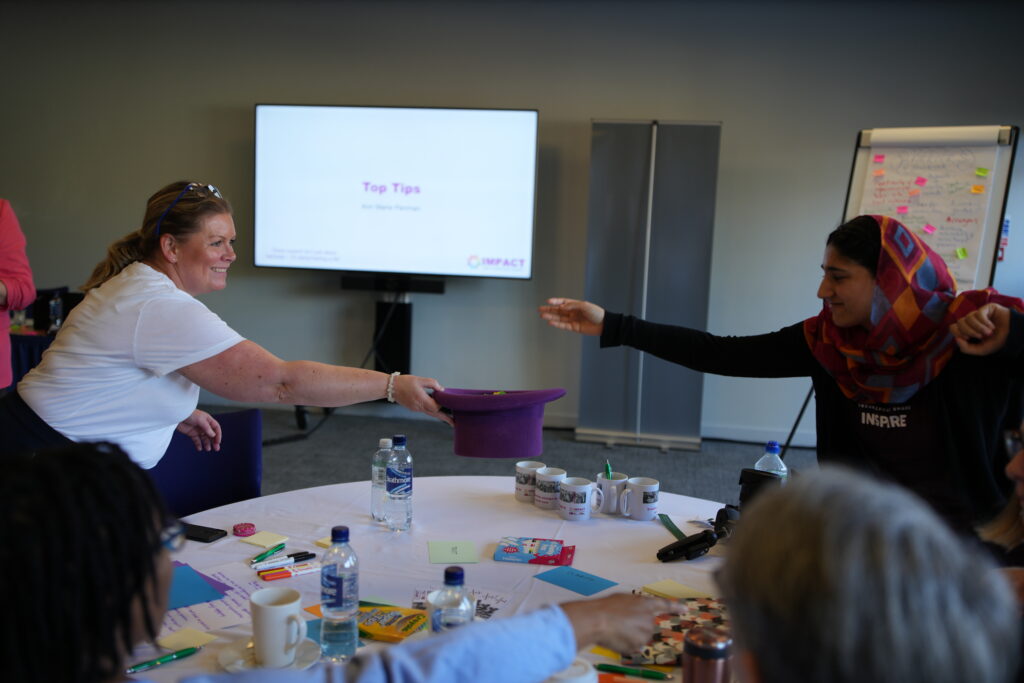

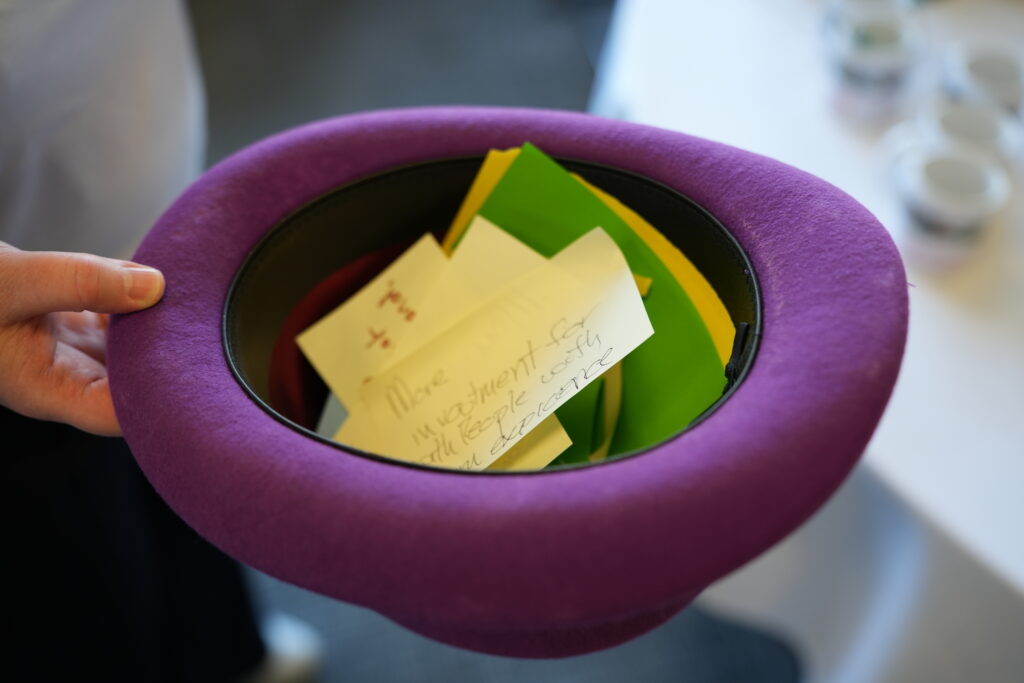
The team discussed how they do and can enable co-production in their work. Beginning with the barriers, the team mentioned:
- Pace, speed of work – time required
- Time constraints of the projects
- Approach to work
- Paying people
- Ethics
- Different understanding/starting point
What can we do to improve co-production?
Some of the highlights the group felt would help counter the barriers identified:
- Considering how we start and end projects include improving continuity for people involved in IMPACT
- Structured one-pager on how to engage
- Building trust – this requires more regular contact and engagement
- Improving payment processes, but also acknowledging the structural restraints of this
- Improving how social care interacts with DWP, immigration, and other services
- Practical changes, like in-person changes and activities compared to only online versions
- Accessibility guides and online tutorials for good co-production and engagement.
- Learning from doing, by ensuring we have dialogue
- Reducing acronyms within the sector
- How to involve people within the whole recruitment process, not just interview panels
- Building co-production capacity within others through the CpAG
- Reminding everyone that evidence for us includes research, lived experience, and practice knowledge.
What does good co-production look like?
Karen Watchman shared her story of what good looked like. Karen works mainly with people who have learning difficulties and dementia.
“Projects I have worked on have come from one initially funded group with learning difficulties and dementia. The work with them has developed through these conversations. The learnings show that the things that have helped are:
- Continuity. This has happened through discussion with the group and applying for further grants.
- Resources. Building this into the grant applications to support people to participate. This includes improving our organisations to meet the needs of the people we want to engage.
- How the meetings are held. They have pre-meetings to discuss the agenda and presentations that will be made. This supports them to understand the content and ensure everything is useful. It requires good planning and time management.
- Traffic light system. We use this to consider where we are in a project. Everything is written in an easy read format for everyone to support with understanding.
Part 3: Practice
The Co-production Ladder
Kathryn Mackay introduced the team to Think Local Act Personal’s co-production ladder. This was designed to highlight the stages of co-production. It helps us reflect on our current stage and what we would need to improve to move further up the ladder.
Everyone placed themselves on the ladder, so the whole group could visually see how each of us believes we use co-production within our individual roles. The discussion reflected on the challenges and benefits of this approach.
Alicia added, “The complexity around this is not insignificant – I don’t see it as a ladder but as a spectrum. I can shoot between different areas depending on the tasks/roles that I’m doing at the time”.
Action plans
Alongside the personal action plans everyone made, they each contributed ideas for how they would like IMPACT to adapt going forward. Some of these included:
- Accessibility and regular contact would help IMPACT Assemblies
- Clarity on what co-production means for different roles in IMPACT
- Changing how we use techniques that may not have high levels of engagement
- Reviewing projects a year later
- Create free, open access online co-production toolkits
- Employment opportunities to support engagement of people with lived experience.
- Transparency on how co-production influences decision making in IMPACT
- Closing the feedback loop with people who are involved in projects
- Creating a ‘team CV’ so we can share our personal lived experiences and include these within co-production
- Co-producing our regular whole team meetings to develop our skills and facilitate discussions.
Part 4: Review
The whole team revisited their intended outcomes from the morning and decided if they had been achieved or not.
The majority of the group decided their outcomes had been achieved.
A huge thank you to Ben for organising this away day, and to Karen, Natalie, and Ann Marie for their delivery. We look forward to the next one.
Thank you to everyone who attended today. It was a valuable workshop and we look forward to seeing how your action plans improve co-production within IMPACT.
